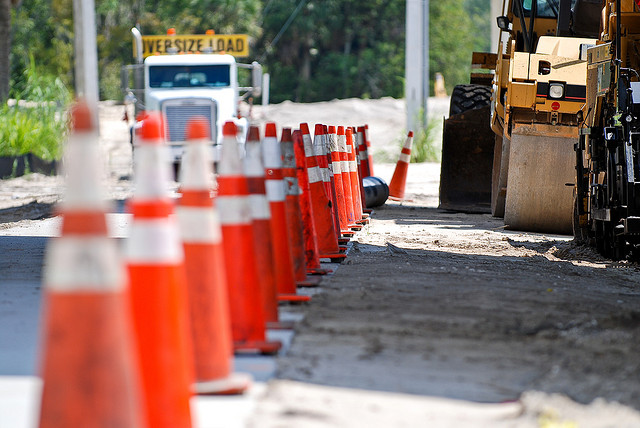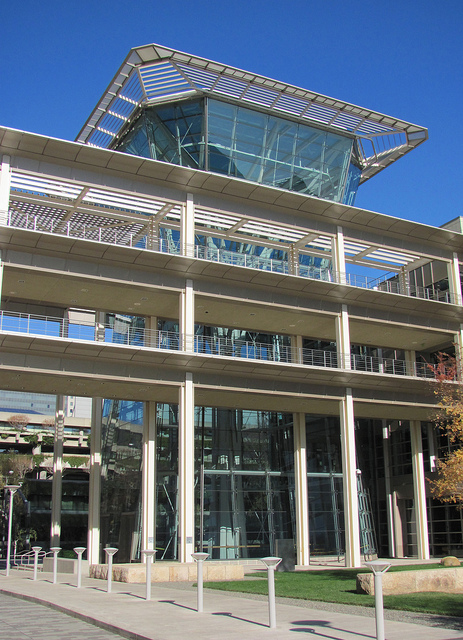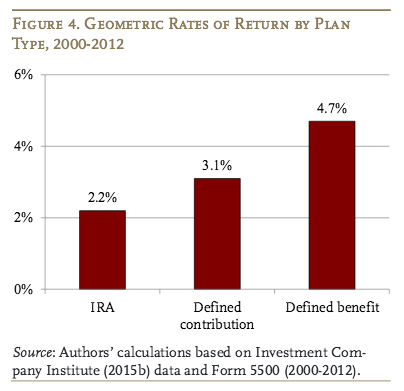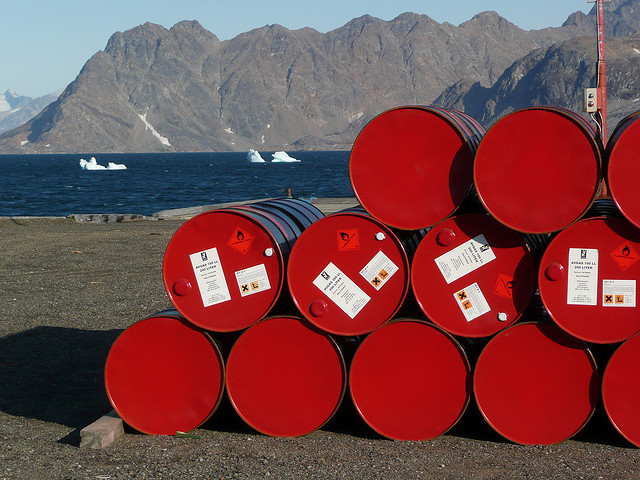
Leo Kolivakis is a blogger, trader and independent senior pension and investment analyst. This post was originally published at Pension Pulse.
Chris Cooper of Bloomberg reports, Japan’s $1.1 Trillion Pension Fund Boosts Infrastructure Section (h/t: Pension360):
Japan’s 135 trillion yen ($1.1 trillion) Government Pension Investment Fund is building up its alternative investment department after raising bets on infrastructure projects more than 10-fold to secure higher returns than low-yielding bonds.
The world’s largest retiree fund has boosted staff in its alternative investment section, formed last year, to five people, Shinichirou Mori, director of the fund’s planning department, said Dec. 11 in Tokyo. The fund is still trying to hire more people for the department, according to its website.
The fund’s investments in infrastructure rose to about 70 billion yen at the end of September, based on figures supplied by GPIF, up from 5.5 billion yen at the end of March. The decision to invest in infrastructure is drawing interest abroad, with India’s railway minister urging the nation to invest in rail projects there.
“Infrastructure investments can provide stable long-term revenue and so we anticipate it will help steady pension finances,” Mori said in an e-mailed response to questions Dec. 4. “We haven’t set a number on how many people we will add to the department. If there are good people we will hire them.”
Aging Population
Japan’s giant pension manager is shifting to riskier assets to help increase returns as the number of retirees grows and Prime Minister Shinzo Abe’s government tries to spur inflation, which erodes the fixed returns offered by bonds.
Last month the fund posted its worst quarterly result since at least 2008, as a slump in equities hurt returns. GPIF lost 5.6 percent last quarter as China’s yuan devaluation and concern about the potential impact when the Federal Reserve Board raises U.S. interest rates roiled global equity markets.
About 53 percent of the fund’s assets under management were in bonds as of Sept. 30, according to a statement on its website. The retirement fund’s stock investments are largely passive, meaning returns typically track benchmark gauges. The fund held 0.05 percent of its assets in alternative assets at the time, it said.
Canadian Ties
GPIF teamed up in February 2014 with the Ontario Municipal Employees Retirement System and the Development Bank of Japan to jointly invest in infrastructure such as power generation, electricity transmission, gas pipelines and railways in developed countries. It may expand infrastructure investments to as much as 280 billion yen over the next five years as part of the agreement, it said in a statement at the time.
The alternative investment department also can invest in private equity and real estate, although it hasn’t yet, Mori said. The fund will invest as much as five percent of its portfolio — 7 trillion yen as of September — in alternative assets, it said last year. Mori declined to give details of its infrastructure investments.
This year’s infrastructure investments were made through the unit trust structure announced for the joint OMERS projects. The investment decisions are made by Nissay Asset Management Corp. according to the mandate decided by the GPIF. The GPIF team makes sure the details are in line with the investment mandate it outlined for the trust, Mori said.
I recently discussed how Japan’s pension whale got harpooned in Q3 as Japanese equities got slammed that quarter but this big shift into infrastructure is worth noting because it means GPIF will become a huge player in this asset class.
And teaming up with OMERS, which is arguably the best infrastructure investor in the world among global pensions, is a very smart decision. I covered the launch of OMERS’ giant infrastructure fund back in April 2012 and think pensions looking to invest in this asset class should definitely consult them first (there are others like the Caisse, Ontario Teachers, CPPIB and PSP that invest directly in infrastructure but OMERS is widely recognized as a global leader in this asset class).
Interestingly, GPIF isn’t the only giant fund looking to invest in infrastructure. Jonathan Williams of Investment & Pensions Europe reports, Norges Bank bemoans lack of scale for developing nations’ infrastructure:
The manager for Norway’s sovereign wealth fund has bemoaned the smaller scale of infrastructure projects in developing nations after a report to the government called for it be allowed to invest in the asset class.
Noting that infrastructure assets in emerging markets and developing economies present additional challenges not found in OECD countries, a discussion note released by Norges Bank Investment Management (NBIM) nevertheless emphasises that the less mature markets represent “interesting investment opportunities for investors willing and able to take on these additional risks”.
The publication of the note, released alongside a complementary paper discussing the opportunities in renewable energy, comes after the Norwegian government was urged to allow the Government Pension Fund Global (GPFG) to invest in unlisted clean energy and emerging market infrastructure.
In a report co-written by Leo de Bever, former chief executive of the Alberta Investment Management Corporation and commissioned by the Ministry of Finance last year, the government was also urged to broaden the GPFG’s property mandate to allow it to benefit from urbanisation in emerging markets.
The detailed report made a number of suggestions, although the three co-authors – de Bever, Stijn Van Nieuwerburgh of New York University and Richard Stanton of University of California, Berkeley – could not agree whether the sovereign fund should opt for listed or unlisted infrastructure investments, with a 2-1 split in favour of a “substantial” direct infrastructure portfolio (Correction: 2-1 split was in favour of listed infrastructure portfolio).
Van Nieuwerburgh and Stanton were concerned with “myriad non-financial risks” stemming from unlisted holdings, including political and reputational risks, whereas de Bever argued that the sovereign fund’s peers were operating largely in the unlisted space.
Outlining their reasons for investing in emerging market infrastructure, the co-authors cite a strong historical performance but also the “enormous” funding need in such countries, especially after traditional funding sources were in decline.
“The main challenge lies in managing several incremental sources of risk such as political risk, regulatory risk and management and governance risk,” the report says.
It also recommends a greater focus on emerging market property once NBIM has built up sufficient internal expertise.
“Due to urbanisaton, a growing middle class and a rebalancing towards a larger service sector,” it says, “much of the world’s future demand for real estate will be in developing countries.”
The recommendation that NBIM be allowed to grow clean energy holdings into the unlisted space comes after the fund’s environmental mandate – partially comprising stakes in listed clean energy – was doubled.
The “opening up” to unlisted clean energy would allow NBIM to “explore” the sector, the report’s authors said, adding that clean energy would constitute “a majority” of energy investments over the coming 30 years.
You can view the press release Norway’s pension fund put out here and download the entire report the three co-authors wrote by clicking here.
I contacted Leo de Bever, AIMCo’s former CEO, who was kind enough to provide me with his insights on how Norway’s GPFG should invest in real estate and infrastructure (added emphasis is mine):
Helping to answer Norway’s question whether to invest in more real estate and infrastructure in their GPFG fund has for me highlighted some key differences in academic and practitioner perspectives on investing and taking investment risk. Difference of opinion creates a market. Better ideas should flow from that, provided we all keep an open mind, without getting locked into any single investment paradigm too simplistic to be useful in addressing reality.
I believe that pension managers should have the courage to exploit the very real comparative advantages of stable capital and a long investment horizon. My colleagues on this report put their trust in the short-term efficiency of markets, the futility of trying to earn better than average returns, and the rigour of long-term historical data to guide future investment strategy.
Without seeming to be from Woebegone, I always look for ways to be better than average, by considering how future opportunities could be profitably different from the past. After 40 years of declining interest rates, historical evidence may be particularly suspect, and we will need to rely more on clear thinking than on historical statistics. As I learned long ago building macro-models at the Bank of Canada, present and future problems do not come with a neat data set to fit our econometric tool kits.
Most pension investors share my view that there are economies of scale and short-term market inefficiencies to be exploited. There also is value in going beyond conventional instruments and the zero sum game of listed markets, using long term strategies not accessible to most investors and managers. By definition these approaches cannot be replicated with a sequence of short-term strategies, and they often involve new types of investments that are attractive precisely because they are new and unusual.
Pursuing unusual long-term opportunities comes with personal risks long ago highlighted in Keynes’ observation that it is better for one’s reputation to fail conventionally than to try and succeed unconventionally. If you try to innovative, there will be setbacks, particularly in the short run, and there is no shortage of observers willing to tell you how irresponsible you were in assuming they could be successes. I have the bruises to show for it, but still believe it is the right thing to do. If that all seems too scary, stick with indexing. But if your worry about opportunity cost, factor in Gretsky’s observation that he missed 100% of the shots he never took.
My colleagues on this study analyzed the universe of real estate and infrastructure markets. They concluded that listed and unlisted markets for each of these two asset classes had the same return, and that the listed markets provide the governance advantage of current pricing and liquidity. Since most real estate is unlisted, they agreed Norway had little choice but to invest in unlisted real estate, but since most of the infrastructure they studied was listed, they advised investing in listed infrastructure.
However, no pension manager holds a proportionate slice of the broad real estate and infrastructure markets. They target mostly unlisted subsets of each market based on certain steady return and moderate risk characteristics. From their perspective infrastructure in particular has less to do with what it looks like, than with the economic contract defining its returns. To a long-term investor, lags in unlisted pricing are a nuisance, but the only numbers that ultimately matter are purchase and sale price, and one could question whether current prices are truly efficient. They worry more about the advantage for return of having greater insight and influence on governance at the asset level. As for liquidity, that is largely illusory for a big pension plan.
Based on my own research over the last four years into accelerating technological change, particularly as it relates to water and energy, Norway will have lots of opportunity to combine the profitable and desirable through private investments in more efficient and more environmentally friendly infrastructure. The main hold-up is the historical underpricing of most social infrastructure services like water, sewage, and roads.
As always, attracting private capital will require the right expected return, the right investment structures, and investor trust in the fairness of regulation and the enforceability of long term contracts. The greatest need for infrastructure will be in developing nations, but the political and governance issues will be particularly challenging in those geographies.
When it comes to infrastructure, Leo de Bever knows what he’s talking about. In 2010, the godfather of infrastructure expressed serious concerns on the asset class but he’s absolutely right in his recommendations and insights in this report.
Back in 2004, after I helped Derek Murphy on his board presentation on setting up PSP’s private equity investments, I helped Bruno Guilmette with his board presentation on setting up PSP’s infrastructure investments. I remember looking at the FTSE Infrastructure Index but there was no question whatsoever that unlisted infrastructure offered tremendous opportunities above and beyond what listed infrastructure investments offer over a long investment horizon with no stock market beta.
Are there risks investing in unlisted infrastructure? Of course, there are regulatory risks, currency risks, illiquidity risks and bubble risks which are magnified when every large global pension and sovereign wealth fund is looking to invest in infrastructure projects.
But it’s simply mind-boggling that a giant pension fund like Norway’s GPFG which doesn’t have liquidity constraints and already has too much beta in its portfolio (like Japan’s GPIF) wouldn’t develop its unlisted infrastructure investments. Its senior managers also need to talk to OMERS, the Caisse, Ontario Teachers, PSP, CPPIB, and others on how to go about doing this in an efficient and risk-averse way where they don’t get whacked on pricing or experience regulatory risks.
Having said this, I wouldn’t chuck listed infrastructure out of the equation. There are great infrastructure companies in public markets well worth investing in. I would mix it up but keep the long-term focus on direct investments in unlisted infrastructure and I would use the FTSE Infrastructure Index and a spread to benchmark those unlisted infrastructure investments (I know the FTSE Infrastructure Index is far from perfect which is why many funds use a mix of stocks and bonds as their benchmark for infrastructure and adjust it for illiquidity and leverage).
I’m a stickler for solid benchmarks that properly reflect the risks of underlying investments at each and every investment portfolio of a pension fund, especially those governing private markets where leverage and illiquidity risks are present. Benchmarks are the key to understanding whether compensation adequately reflects the risks senior managers take to beat them. This was not discussed in the report.
Photo by Kyle May via Flickr CC License










